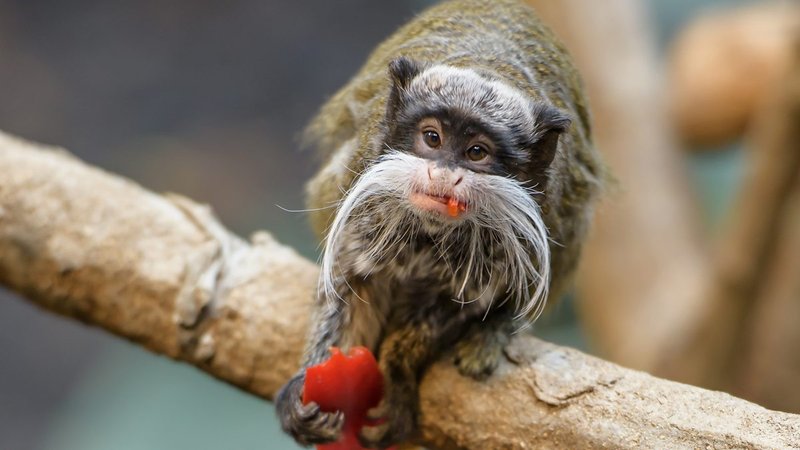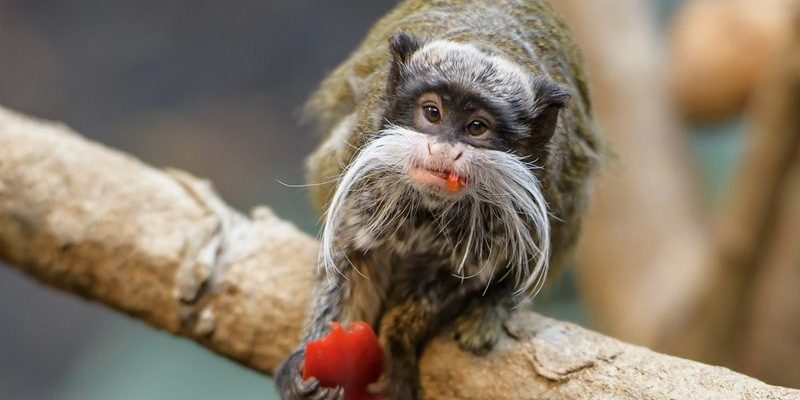
Tamarins are small, with their charming faces and playful behavior captivating anyone lucky enough to spot them. But there’s much more to these creatures than just their cute appearances. They have developed unique diets and hunting strategies that allow them to thrive in their natural habitat. So, let’s dive into the world of tamarins, exploring what they eat and how they hunt.
Understanding the Tamarin’s Diet
Tamarins are primarily insectivorous and frugivorous, meaning they feast on insects and fruit. Their diet can be likened to a balanced breakfast buffet. Here’s a closer look at what’s on the menu for these clever little foragers.
- Fruits and Flowers: Tamarins love fruits like berries, bananas, and even nectar from flowers. This plant-based diet offers them essential vitamins and energy.
- Insects: Insects make up a large part of their protein intake. Tamarins hunt ants, caterpillars, and other small bugs, ensuring they have a balanced diet.
- Tree Gums: Some tamarin species have a particular fondness for tree sap. They use their sharp teeth to gnaw on the bark, allowing them to sip the sweet gum inside.
This diverse diet is crucial for their health and energy. Just like us, they need a mix of nutrients to keep them active. Their ability to adapt their eating habits based on seasonal changes also proves their remarkable survival skills.
Hunting Strategies of Tamarins
You might be wondering how such small creatures manage to find food in a vast canopy filled with competition. Tamarins have developed some clever hunting strategies that make them expert foragers.
- Group foraging: Tamarins are social animals. They often hunt in groups, which helps them find food more effectively. Working as a team not only increases their chances of spotting food but also deters potential predators.
- Vigilance and Communication: These little primates are highly alert. They communicate with each other through various calls and signals, quickly letting their group members know when they’ve found something tasty.
- Adaptability: Depending on the availability of food, tamarins can adjust their hunting techniques. If fruit is abundant, they’ll focus on that; if not, they’ll switch to hunting insects or sap.
Their hunting strategies highlight their intelligence and adaptability, showing that even small creatures can develop sophisticated techniques to thrive in their environments.
Social Behaviors During Foraging
Tamarins are not just solo operators when it comes to hunting; social behavior plays a significant role in their foraging success. Picture a scene of little tamarins chattering away in the trees—there’s a reason for all that noise!
- Cooperative Hunting: Family groups often forage together. This cooperative behavior ensures everyone gets enough to eat and strengthens social bonds within the group.
- Parental Roles: Adult tamarins take turns caring for and teaching the young ones how to find food. You could think of it as their version of a family cooking class.
- Sharing and Bonding: You’ll often see them sharing food, which helps reinforce their social connections. It’s like sharing snacks during a study session—bonding over food!
These social dynamics enhance their hunting efficiency and make for an interesting group dynamic, turning every meal into a communal event.
Seasonal Changes in Diet
Like many animals, tamarins must adapt their eating habits based on seasonal changes. Imagine adjusting your diet based on what’s in season at the grocery store—tamarins do just that, but with nature’s offerings.
- Fruit Availability: During fruiting seasons, tamarins feast on a variety of fruits. Their ability to remember which trees bear fruit helps them return to their favorite spots.
- Insect Swarms: Certain insects are more abundant in warmer months. Tamarins take advantage of these insect populations, switching from fruit to protein-rich sources when necessary.
- Dry and Wet Seasons: In areas where seasons vary dramatically, tamarins have adapted to modify their diets to survive. They know when to dig deep for food, relying on their impressive foraging skills.
By adjusting their diets according to seasonal changes, tamarins showcase their remarkable adaptability, ensuring they thrive no matter the conditions.
Threats to Tamarin Food Sources
Unfortunately, tamarins face challenges that impact their ability to find food. As adorable as they are, these threats can disrupt their diets and hunting strategies.
- Habitat Destruction: Deforestation for agriculture and urban development significantly reduces their living space and food sources. It’s like taking away a buffet they rely on!
- Climate Change: Changes in climate can alter the availability of fruits and insects. Tamarins might find it harder to adapt to new conditions.
- Illegal Wildlife Trade: Tamarins are also at risk from poaching and the illegal pet trade, which leads to population declines and disruption of their social structures.
The challenges tamarins face in their quest for food highlight the delicate balance they maintain within their ecosystems. Protecting their habitats is crucial for their survival.
Final Thoughts on Tamarin Diet and Hunting
The diet and hunting strategies of tamarins are a fascinating blend of behavior, adaptability, and social interaction. These little primates remind us how interconnected nature is and how every species plays a role in its ecosystem.
By understanding their dietary habits and the challenges they face, we can appreciate these creatures even more. Whether you’re an animal lover, a budding naturalist, or just someone curious about the world, tamarins offer a captivating glimpse into the wonders of nature. So the next time you find yourself in the jungle or even at your local zoo, keep an eye out for these energetic little foragers—they just might remind you of the importance of community and adaptability in our own lives.

